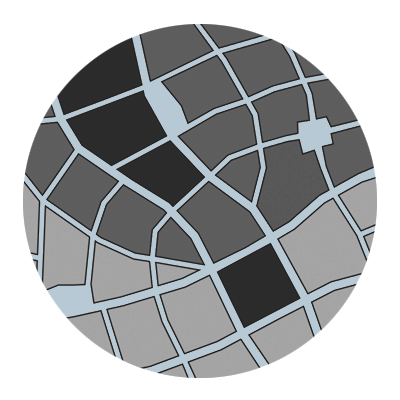Category: Theory and Practice
“People Habitat”: Kaid Benfield takes Smart Growth to a higher level
For several weeks now I’ve intended to write up my thoughts on “People Habitat,” the recently-released book from NRDC smart growth sensei -- and friend -- Kaid Benfield. Not that it’s anything he needs, mind you. A quick look at his reviews over on Amazon reveals a diverse collection of accolades, consistent only... Continue Reading



Reaching the Limits of Passionate Defense: Time to turn back
When House Speaker John Boehner, indulging his inner Howard Beale, launched a Republican counterattack against the party’s far right wing, it seemed to me the GOP was finally rubbing up against the same rough edges of reality that have become apparent in big-time sports. And the lessons apply as much to civic life in... Continue Reading
Category Community Development, Theory and Practice



Happy City Highlights
Ever had one of those doctor’s visits in which your physician questions you in great detail about your family medical history? Trying to tease out the nebulous connections within your DNA to explain certain strengths, weaknesses, and anomalies. And then he uses that connecting thread to help solve something that’s... Continue Reading
Category Experience, Theory and Practice



One Chart to Explain Everything: You’re welcome
Welcome to what we all need: A single chart that explains everything. Okay, maybe not everything. But a lot of stuff, especially stuff related to making rules for growing businesses and communities.
It's simple. And here's what it illustrates: When you’re shaping rules to live by, the more you optimize flexibility,... Continue Reading
Category Theory and Practice
Tags Ben Brown



Informing Excellence (Not Imitation)
The flurry of social media discussions sparked by my recent series on lessons from great cities has made it apparent that a few things aren’t clear. When I write about a particular square in some inspiring place, I’m hoping you won't take away from it that we should stamp 5-story buildings on 50-yard wide squares... Continue Reading



Cottage Simplicity: Keeping it easy, making it attainable
We talk often here on PlaceShakers about cottage living, as well as drilling down into how to make that happen at home, with conversations like Small Y’all: A Cottage Solution to the Housing Problem and “Pocket Neighborhoods”: Scale Matters.
This weekend, strolling through Victoria Beach -- an insightful cottage... Continue Reading



Here Comes Chaos: David Lynch sketches the landscape
If I’d been paying better attention (which is how I start a lot of sentences these days), I could have begun my reeducation in the ways things work in 1986. That’s when film director David Lynch gave us Blue Velvet.
Back then, the way Dennis Hopper and Isabella Rossellini embraced Lynch’s sex and violence mash-ups... Continue Reading



CNU21: Insights and Highlights from Salt Lake City
Git ‘Er Done | Hazel BorysThis year's CNU was all about doing again, unlike the past few years where we've focused on stop-gap measures to redirect our investment choices to more resilient patterns. Looks like they might be starting to pay off. Still, we have plenty of hard work ahead to remove both legal... Continue Reading



Meet Your ‘Makers: Where we’ll be at CNU 21 Salt Lake City
It's that time of year again, fellow urbanists. The Congress for the New Urbanism, perhaps the country's most comprehensive gathering of city planners, city builders and city lovers. This year, the 21st, is themed Living Community which, according to organizers, "balances the demands of physical, social, economic, and... Continue Reading
Category Planning and Design, Theory and Practice



American Makeover Debut:
“Seaside: The City of Ideas”
Following up on their debut episode, “Sprawlanta,” the good folks at First + Main Media have unveiled the latest installment in their “American Makeover” documentary series: “Seaside: The City of Ideas.” (Disclosure: PlaceMakers is a sponsor of the series.) In it, town designer Andrés Duany leads a guided... Continue Reading












